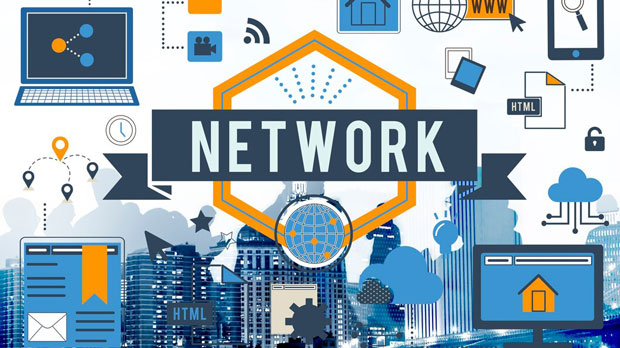Are there any free cheap SOCKS5 proxies available?
When it comes to online privacy, security, and bypassing geo-restrictions, socks5 proxies are a popular choice among users. Many individuals search for free or cheap SOCKS5 proxies to meet their needs without breaking the bank. While there are options available in the market, it's crucial to understand the limitations, risks, and trade-offs of using such proxies. This article delves into the availability of free and affordable SOCKS5 proxies, discussing their practicality, the challenges involved, and whether they truly serve their intended purpose. Understanding SOCKS5 ProxiesBefore discussing whether there are free or cheap SOCKS5 proxies, it's important to understand what SOCKS5 proxies are and why they are used. SOCKS5 is a type of proxy server that works at the transport layer of the OSI model, allowing it to support any kind of internet protocol, including HTTP, FTP, and P2P traffic. One of the primary benefits of using SOCKS5 proxies is that they offer a high degree of anonymity and flexibility, as they do not alter data packets, making them less detectable by websites and applications.SOCKS5 proxies also support various authentication methods, which adds a layer of security. Unlike other proxy types, such as HTTP proxies, SOCKS5 can route all types of traffic, whether it’s for web browsing, file-sharing, or gaming. Because of these features, SOCKS5 proxies are often preferred by those who need reliable and anonymous internet access.Do Free SOCKS5 Proxies Exist?There are indeed free SOCKS5 proxies available, though users should approach them with caution. While they may appear enticing for those looking to save money, free proxies come with a range of potential drawbacks.1. Security and Privacy Risks: Free SOCKS5 proxies may not offer the same level of encryption and security as paid services. Since these proxies are typically supported by ads or limited funding, the proxy provider may monitor your traffic for purposes such as data collection, which compromises your privacy. Furthermore, some free proxies might even inject malware or malicious scripts into your internet traffic, potentially putting your device and personal information at risk.2. Limited Reliability and Speed: Free SOCKS5 proxies are often shared by multiple users at once, which can significantly slow down connection speeds. Since many free proxy services have limited resources, they may struggle to provide a stable connection during peak hours. This makes free proxies less reliable, especially for activities that require a consistent, high-speed connection, such as streaming or gaming.3. No Customer Support: Free services typically do not offer customer support. If you encounter any issues with the proxy server, you will have to rely on forums, third-party guides, or your own troubleshooting skills. For users who require dependable service, this lack of support can be a major disadvantage.4. Limited Geographic Coverage: Free SOCKS5 proxies often have limited server locations, meaning that you might not be able to access content from specific regions or bypass certain geo-blocked websites. The fewer the number of available servers, the more congested those servers will be, further decreasing performance.Cheap SOCKS5 Proxies: Are They Worth It?While free SOCKS5 proxies come with numerous limitations, cheap proxies can provide a more reliable and secure option. The market for affordable SOCKS5 proxies is large, and there are providers offering services at relatively low costs. However, like with any online service, you get what you pay for. Here’s an in-depth look at whether cheap SOCKS5 proxies are worth considering.1. Better Performance and Speed: Cheap SOCKS5 proxies, even though they may not offer the same performance as premium ones, often provide much faster and more stable connections compared to free proxies. Since these services are paid for, providers can afford to offer better infrastructure, more server locations, and less traffic congestion. This leads to better performance for activities like browsing, downloading, or streaming.2. Improved Security and Privacy: Low-cost SOCKS5 proxies tend to have better security features than free alternatives. Many cheap proxies offer encryption, which ensures that your online activities remain private and protected from hackers or third parties. While the level of security may not be as robust as higher-end services, it is still a significant upgrade compared to free proxies.3. Access to More Features: Cheap SOCKS5 proxies are more likely to come with additional features such as better customer support, unlimited bandwidth, and more geographical server options. These extras can enhance the user experience and provide a more comprehensive solution for people who need SOCKS5 proxies for specific tasks, such as bypassing regional restrictions or running automated scripts.4. Risk of Overselling: While cheap proxies are generally more reliable than free ones, they can still come with downsides. Some proxy providers might oversell their services, leading to performance degradation during peak usage times. It’s essential to review the terms of service and the specifications of the proxy provider to ensure that the service aligns with your needs.Free vs. Cheap SOCKS5 Proxies: Which Is the Right Choice?When deciding between free and cheap SOCKS5 proxies, users must weigh their priorities in terms of security, performance, and reliability. Free proxies may seem like an attractive option for those on a tight budget, but they often come with significant drawbacks, such as security risks, slow speeds, and limited access to features. On the other hand, cheap proxies offer a more balanced approach, providing better performance and security without costing a fortune.The decision ultimately depends on the user’s needs. For occasional, low-risk activities like browsing a few websites or testing software, a free socks5 proxy might suffice. However, for anyone requiring stable, fast, and secure connections for tasks like gaming, streaming, or running automated tasks, investing in a cheap SOCKS5 proxy service is likely to offer more value in the long run.ConclusionWhile free and cheap SOCKS5 proxies are available, they come with different advantages and disadvantages. Free SOCKS5 proxies may save money, but they often lack the reliability, speed, and security that many users need. On the other hand, cheap SOCKS5 proxies offer a more dependable solution, with better performance and improved privacy features, although they may still fall short in comparison to premium services.For users who need consistent and secure proxy services, opting for a cheap SOCKS5 proxy might be the best choice. However, it’s important to evaluate the specific needs, use cases, and potential risks before making a decision. As always, when choosing any proxy service—whether free, cheap, or premium—it’s essential to prioritize privacy, security, and performance to ensure that your online activities remain safe and effective.
2024-12-26

























































